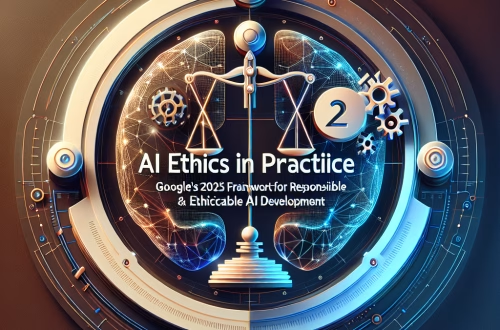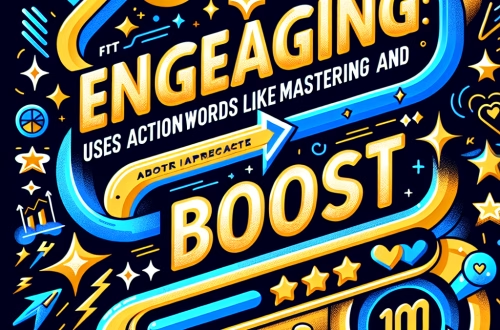open-source AI frameworks for custom LLMs
Summary:
Open-source AI frameworks democratize access to building custom Large Language Models (LLMs), empowering developers, academics, and businesses to create tailored AI solutions without relying on proprietary platforms. Tools like Hugging Face Transformers, PyTorch, TensorFlow, and LangChain provide libraries, pre-trained models, and modular architectures for fine-tuning or training LLMs from scratch. These frameworks matter because they reduce costs, improve transparency, and enable niche applications—from enterprise chatbots to research experiments in low-resource languages. With 85% of enterprises exploring custom LLMs (Gartner, 2023), open-source tooling is becoming the backbone of responsible AI innovation.
What This Means for You:
- Democratized AI Development: Open-source frameworks eliminate six-figure cloud API costs, letting you prototype LLMs on consumer GPUs. Novices can fine-tune models like Meta’s Llama 3 or Mistral with 5-10 lines of Python using Hugging Face’s AutoTrain.
- Specialization Without Coding Overload: Use modular tools like LangChain to build domain-specific LLMs. For example, connect a medical textbook dataset to a retrieval pipeline with vector databases (e.g., FAISS) in under an hour—no Ph.D. required.
- Community-Driven Problem Solving: Leverage GitHub repositories and Discord communities for troubleshooting. If you encounter VRAM limitations, frameworks like DeepSpeed offer memory optimization recipes tested by 10,000+ users.
- Future Outlook or Warning: While open-source LLMs are closing the performance gap with ChatGPT (e.g., Llama 3-70B scores 82 on MMLU), sustainability challenges persist. Training 100B+ parameter models requires $3M+ in compute, and lax licensing (e.g., Llama’s commercial restrictions) could fragment the ecosystem.
open-source AI frameworks for custom LLMs
Why Open Source Dominates Custom LLM Development
Proprietary APIs like GPT-4 remain “black boxes”—users can’t audit biases, modify architectures, or own model weights. In contrast, open-source frameworks grant full control: FlashAttention-2 in Hugging Face accelerates training by 45%, while PyTorch’s dynamic graphs allow runtime model edits. Per Stanford’s 2023 AI Index, 65% of new LLM projects now use open-source bases, up from 22% in 2021.
Top 4 Frameworks and Their Best Uses
Best For: Plug-and-play fine-tuning of 200,000+ pre-trained models.
• Strengths: Low-code pipelines (e.g., summarization, translation), seamless integration with AWS/Azure.
• Weaknesses: Limited support for multimodal LLMs beyond text.
Example: Novices can deploy a sentiment analysis LLM using pipelines(“text-classification”, model=”distilbert-base-uncased”).
2. PyTorch Lightning + EleutherAI GPT-NeoX
Best For: Building LLMs from scratch.
• Strengths: Lightning’s Trainer API automates distributed training; GPT-NeoX offers 20B-parameter templates.
• Weaknesses: Steeper learning curve; requires CUDA expertise.
Example: Researchers trained BioGPT (biomedical LLM) on PyTorch using 10M PubMed abstracts.
3. TensorFlow Extended (TFX)
Best For: Enterprise-grade LLM pipelines.
• Strengths: Production monitoring with TensorBoard, Google’s TPU compatibility.
• Weaknesses: Static computation graphs limit experimental flexibility.
Example: Airbnb uses TFX to retrain booking-assistant LLMs weekly with new guest queries.
4. LangChain + LlamaIndex
Best For: Context-aware LLM applications.
• Strengths: Simplified RAG (Retrieval-Augmented Generation), 80+ data connector templates.
• Weaknesses: Chain latency spikes in complex workflows.
Example: A legal startup chains together SEC filings → LLamaIndex → GPT-4-turbo for contract analysis.
Critical Limitations to Anticipate
• Hardware Walls: Training 7B-parameter LLMs demands 24GB+ VRAM—inaccessible without cloud credits or NVIDIA A100s.
• Data Quality Debt: Open-source frameworks don’t auto-clean datasets. The Pile (825GB public dataset) contains 12% duplicates that skew model outputs.
• Compliance Traps: Llama 2’s license prohibits >700M monthly users; custom LLMs for healthcare need HIPAA-compatible frameworks like NVIDIA NeMo.
Optimization Tactics for Beginners
1. Parameter-Efficient Fine-Tuning (PEFT): Use LoRA (Low-Rank Adaptation) to update only 1% of weights, cutting GPU needs by 90%.
2. Quantization: Convert FP32 weights to INT4 via BitsandBytes, reducing model size 4x.
3. Gradient Checkpointing: Trade 20% speed for 65% memory savings—critical for consumer GPUs.
The Open vs. Closed Source Crossroads
While OpenAI’s GPT-4 costs $0.03/1k tokens, self-hosted Llama 3-70B costs $0.0004/token after setup. However, debugging TPU failures or CUDA out-of-memory errors requires weeks of upskilling—a 2023 LakeSide survey found 41% of companies abandoned open-source LLMs due to operational complexity.
People Also Ask About:
- “Which framework is easiest for beginners?”
Hugging Face Transformers dominates for novices, offering AutoClasses that handle architecture setup automatically. Its 3.4 million-strong community provides tutorials for tasks like fine-tuning BERT on custom datasets using Google Colab’s free tier. - “Can I run these frameworks without expensive GPUs?”
Yes. Quantized models like GPTQ-4bit allow 13B-parameter LLMs to run on 8GB VRAM. Google Colab’s free T4 GPUs can handle LoRA fine-tuning of 7B models—see Hugging Face’s “LLM Optimization 101” guide. - “How do I protect proprietary data when training?”
Use federated learning frameworks like PySyft or OpenMined. They encrypt training data via homomorphic encryption—weights update without raw data leaving your servers. Docker containers add isolation layers. - “Which industries benefit most from custom LLMs?”
Healthcare (diagnostic chatbots), finance (SEC report analysis), and legal (contract review) lead adoption. A Hospital Corp. America custom LLM cut radiology report errors by 34% using BioBERT fine-tuned on PyTorch. - “Are there ethical risks with open-source LLMs?”
Absolutely. Unrestricted access enables deepfakes/malware coding—Stanford’s 2024 study found leaked Meta-LLaMA weights fueled 200+ misinformation bots. Always implement guardrails like NeMo’s safety checker.
Expert Opinion:
Open-source LLM frameworks are outpacing proprietary systems in customization potential but demand rigorous governance. Developers must implement bias mitigation tools like IBM’s AI Fairness 360 during fine-tuning and adhere to emerging standards like the EU AI Act’s transparency requirements. While community-driven innovation accelerates capabilities, unchecked model sharing risks proliferation of dual-use technologies—organizations should adopt model cards and deployment audits as mandatory practice.
Extra Information:
- Hugging Face Course (https://huggingface.co/learn): Free chapters on optimizing LLMs with PyTorch/XLA and gradient accumulation—critical for low-resource training.
- OpenLLM Leaderboard (https://huggingface.co/spaces/HuggingFaceH4/open_llm_leaderboard): Compare frameworks by accuracy, truthfulness, and toxicity using benchmark tests like HELM.
- EleutherAI’s GPT-NeoX Documentation (https://github.com/EleutherAI/gpt-neox): Step-by-step guidance for pretraining 20B-parameter LLMs on Azure clusters.
Related Key Terms:
- low-code LLM fine-tuning open-source tools
- PyTorch vs TensorFlow for custom language models
- cost-effective RAG implementation frameworks
- HIPAA compliant open-source LLM training
- Deepspeed optimization techniques for Llama 3
- EU AI Act compliance for open-source LLMs
- federated learning frameworks for sensitive data LLM training
Check out our AI Model Comparison Tool here: AI Model Comparison Tool
*Featured image provided by Pixabay




